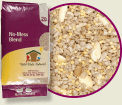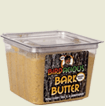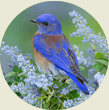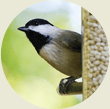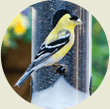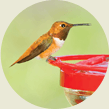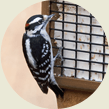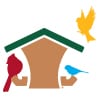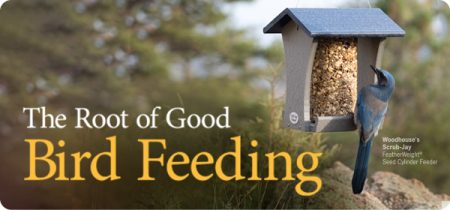
You may be thinking, “So, what is the big deal with so-called native plants? A plant is a plant. What possible difference can it make as to the choice of plants I use to landscape my yard? How can a beautiful plant not be good for birds and other wildlife?”
Great question. Simple answer…bird food! But probably not the type of bird food that first comes to mind.
Many plants produce fruits and seeds that birds use for food, but native plants also attract and feed lots of native insects. Most non-native plants don’t. And insects are the essential element that many bird parents need to successfully raise their young. Fewer native plants means fewer insects, which truly means fewer birds.
How does it work? Native plants and insects have been living together for eons. You could say they grew up together. Countless types of insects have come to utilize specific native plants to provide food for their offspring (think caterpillars). When you replace these native plants with undesirable ones (think turf grass), the entire process comes to a screeching halt. Insect populations crash and so do the bird populations that count on them as food for their nestlings.
Case in point, Carolina Chickadees need more than 6,000 caterpillars to successfully feed and fledge five chicks from their nest! Every day, for up to two weeks, it takes chickadees between 150-200 successful foraging sorties to collect that many caterpillars, even in the best of native habitat. It is simply an impossible task in habitats dominated by non-native plants.
So choices do matter. By using more native plants to landscape your yard, you can create a haven for nesting birds…and bring more birds and more joy into your world.
A great place to start learning more about the bird/plant connection is by reading a wonderful book called, “Nature’s Best Hope” by Douglas Tallamy. It’s truly the best handbook to help you to transform your yard into a vibrant backyard wildlife habitat.
Also, be sure to check out the National Wildlife Federation’s Wildlife Habitat Certification Program or the Birds Canada Gardening for Birds initiatives. These programs provide expert information that will make it easy for you to design and develop your yard into a native landscape that will be great for birds.
And for a fun and entertaining look at the benefits of native plants, be sure to check out the Wild Birds Unlimited Nature Centered Podcast episode, “Habitat: Can You Really Make a Difference?” Hosts John and Brian will share their own experiences and first hand results that have changed the game for wildlife in their own backyards and communities.

